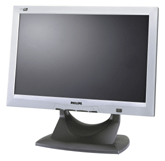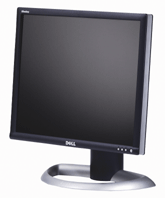If the computer-and-CRT-on-a-desk typified the government office of the 1980s and 1990s, will the flat-panel LCD screen be the emblem of the new millennium? And since a preference for LCDs seems to be the way the market is going, will prices make IT managers weak at the knees?The answers, according to industry analysts, are yes to Question 1 and probably not to Question 2. Buying an LCD for a computer'either for a desktop PC or in the form of a desktop replacement notebook PC'not only makes sense in many cases, it also can save money after the sale.[IMGCAP(2)]In the United States, the overall market seems to agree. According to Samantha Nebrich, a market research analyst with iSuppli/Stanford Resources of Santa Clara, Calif., these could be the best of times for enterprise buyers of LCD monitors.The market 'will continue to get better, prices will continue to drop. You'll see steeper price drops in the second half of this year,' Nebrich said. 'I think [buyers will] see some good bargains towards the end of the third quarter. If you can wait until the fourth quarter you might get a better deal.'What's more, a Rubicon may have been crossed last year when revenues from LCD sales in the United States surpassed those for CRT displays. By the end of this year, Nebrich said, unit sales of LCDs will leave those old tube sales in the dust.'I had seen a lot of end users who were going to stay with CRTs, and that's no longer as much of an issue as it was in the past. There has been a fast shift from CRT to LCD technology,' she said.Some of the reasons for this are obvious: a 15-inch LCD display can weigh less than 10 pounds, less than one-third the heft of a comparable CRT display. Where adjusting the viewing angle of a CRT could be an effort requiring skill and, sometimes, an optional turntable, LCD displays can often be adjusted easily, sometimes with just a finger, something that could be important when weighing Section 508 compliance.Any of these reasons could be sufficient to make the switch, but lower energy costs and less use of lead are sweeteners that a money- and environment-conscious buyer might want to consider as well. On top of that, there's aesthetics: Slim, stylish LCD monitors are almost always preferable to bulky CRTs. And many LCDs offer optional features'USB connectivity, multimedia accessories'their tube-based cousins don't.But it is space and sensibility that is drawing the attention of government buyers to the flat-panel displays, said Robert Stevens, a product marketing manager for Sony Electronics Inc.[IMGCAP(3)]'LCDs are certainly making their presence clearly in government circles,' he said. Buyers there 'are looking for products that are reasonably priced but do have specific characteristics. Other applications which are foremost on the minds of government buyers are wall mountability as well as small footprints for desktop savings since they are sometimes jamming more personnel in smaller spaces.'Stevens cited a Bush administration mandate to buy energy-saving products as another boost for LCDs; in their lowest luminescence mode, he said, LCD monitors can use 60 percent less energy than CRTs.Along with ergonomics and energy savings, Barry Young, vice president and chief financial officer for DisplaySearch, an Austin, Texas, consultancy, said that the overall display market is finding the advantages of LCDs too strong to ignore, which will likely result in lower prices across the board.'What you're seeing is a switch to higher resolutions, larger sizes, and through the 19- and 21-inch monitors, prices are going to come down faster on a percentage basis than they did for 15- or 17-inch monitors,' he said. 'New formats, such as the wide format, could become popular for corporate or large government buyers because it allows you to put up two documents at the same time. For a lot of applications that's a real time-saver with this type of product.'By 2005, the manufacturer's cost of an ultra-XGA, 19-inch flat panel or a 20-inch-wide LCD will drop from about $600 today to $450, Young predicted. At the same time, an upsurge in flat-panel television manufacture will translate into lower monitor costs because of increased production capacity, he said.[IMGCAP(4)]'What we're seeing is a good deal of investment in new capacity, and where the investment is going is in factories that can produce very large displays,' Young said.Increasing demand for large, flat-panel televisions will spur production of 30- and 36-inch screens, which will likely drive down the price for large LCD monitors, he said.Between today and a flat-screen future, buyers can expect relatively stable prices, even if raw-material costs fluctuate somewhat. In the first half of this year, prices for the actual LCD panel'particularly at the 15-inch size'faced monthly incremental price jumps because of manufacturing difficulties in Taiwan partly caused by the outbreak of severe acute respiratory syndrome.With the opening and mainstreaming of fifth-generation LCD fabrication plants in Taiwan and South Korea, supply worries are easing, and so are prices.The bottom line is that while CRTs will remain important for certain applications'including ones where color matching is critical, such as publishing layout and design'the increased quality of LCDs and their declining prices will make them attractive to many buyers. And the fact that you likely won't strain too many muscles moving or lifting an LCD monitor will be a welcome dividend, too.
Philips' $749 170W4 is a 17-inch model with analog and digital inputs.
Dell's UltraSharp 1703FP, a 17-inch monitor with four USB ports, is priced at $479.
Samsung's 172N, one of the company's 17-inch models, is priced at $449.
BenQ's 17-inch FP791, priced at $579, includes a digital photo frame, speakers and SRS sound.










